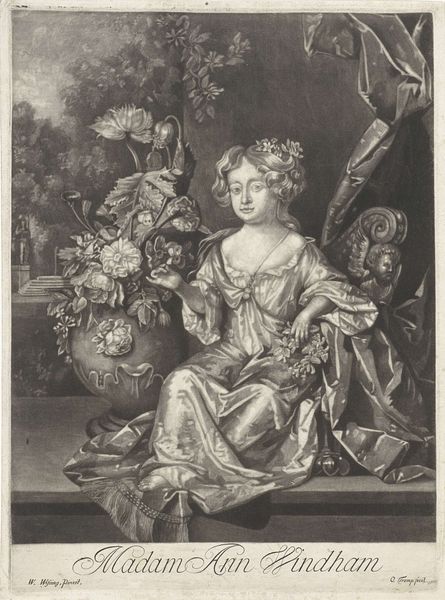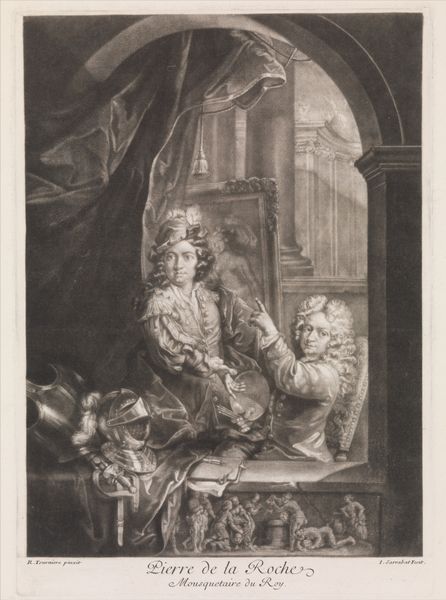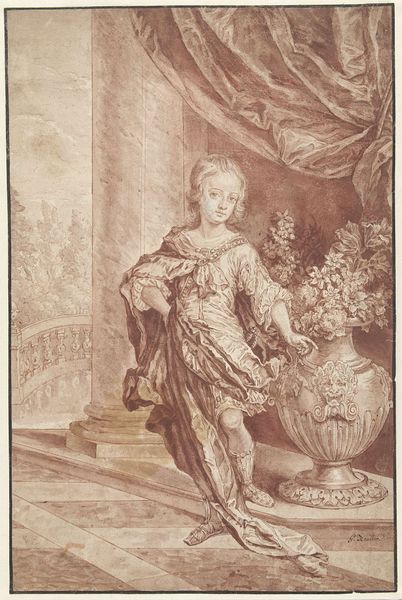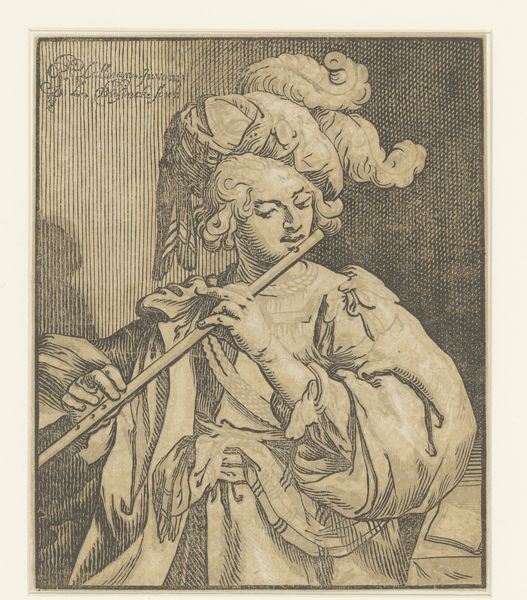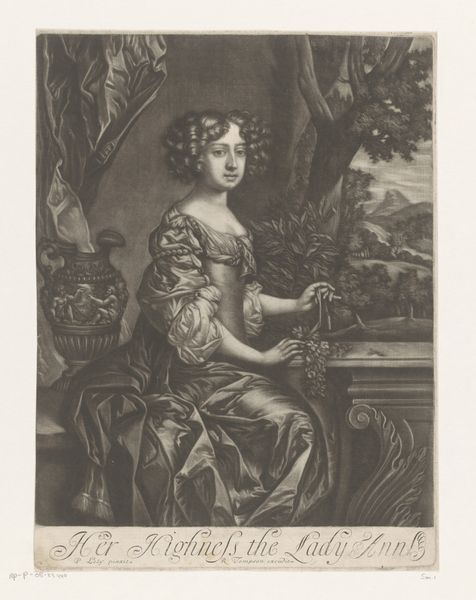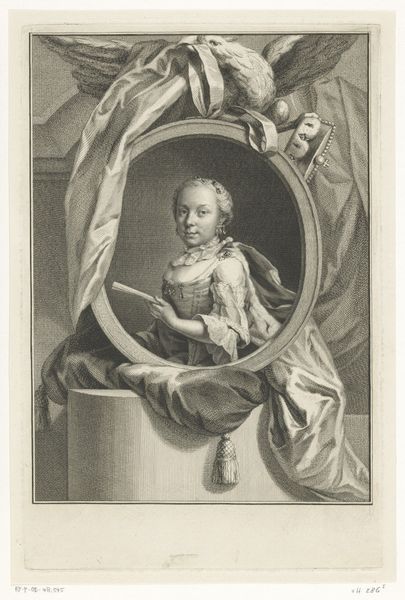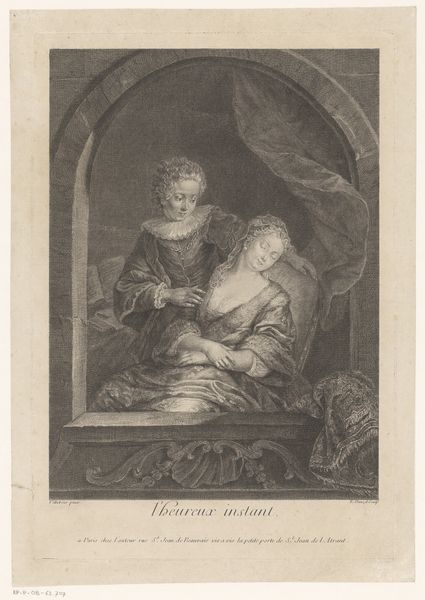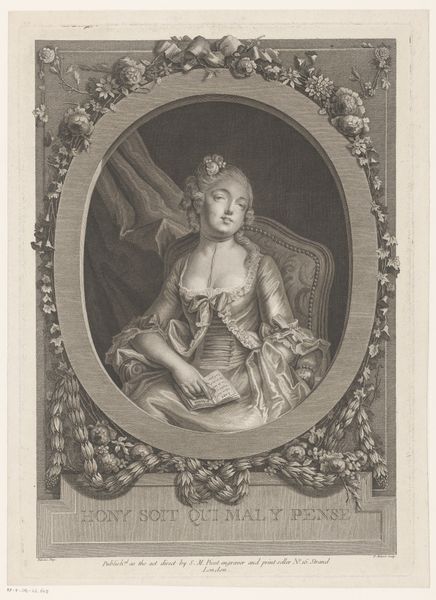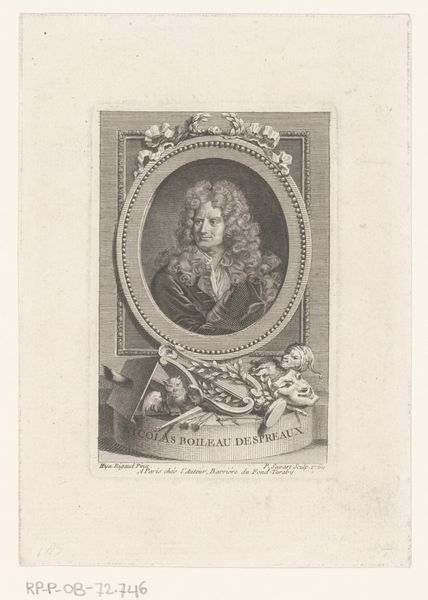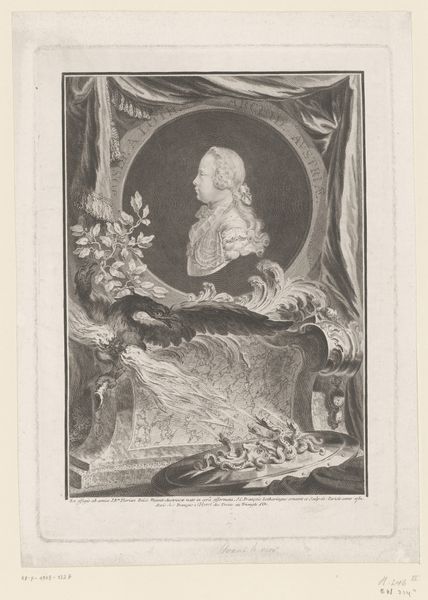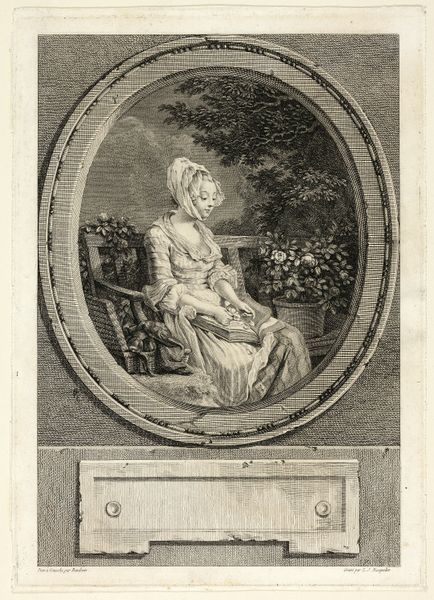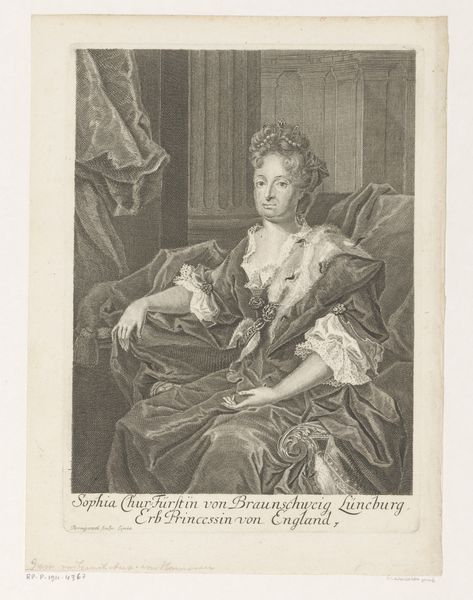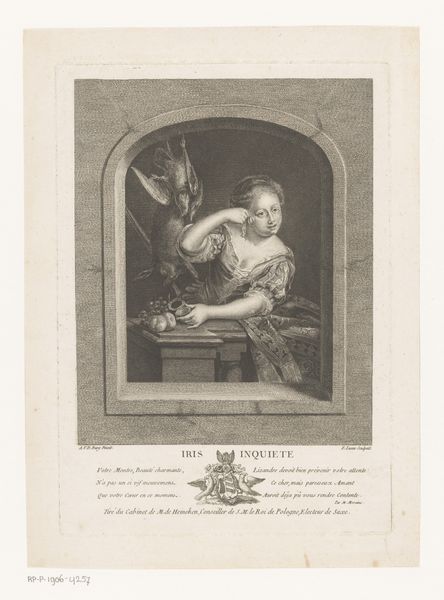
Portret van kind met hond, mogelijk Willem, hertog van Gloucester c. 1692 - 1715
0:00
0:00
drawing, engraving
#
portrait
#
drawing
#
baroque
#
dog
#
portrait drawing
#
genre-painting
#
engraving
Dimensions: height 243 mm, width 190 mm
Copyright: Rijks Museum: Open Domain
Curator: This is a portrait drawing from circa 1692-1715, believed to be by Isaac Beckett. The title translates to "Portrait of a Child with Dog, possibly William, Duke of Gloucester." It’s rendered as an engraving, giving it this detailed, almost photographic quality. Editor: My goodness, that child… I’m immediately struck by the contrast between the ostentatious headpiece and the child's somewhat vulnerable gaze. There's an almost unsettling quality to the opulence juxtaposed with such apparent youth. It feels very burdened. Curator: Right, and that burden speaks volumes about the social conventions of the era. Note the meticulous details captured through the engraving process – every fold of the drapery, every feather, the textures. Consider the labor and skill that would’ve been poured into the making of such an object, especially given its likely purpose: political display. Editor: Absolutely. The materiality is key. This isn't just a portrait; it's a statement. Look at the landscape element in the background and how the indoor scene blends into the outdoors. The artist does a wonderful job creating an ambiance as it highlights the social class the child comes from. Curator: Precisely. Beckett’s technical skill draws our attention not only to the Duke's likeness, but also the larger court apparatus surrounding him. This object functioned within systems of patronage, commodity exchange, and status reaffirmation. The medium is, quite literally, the message. It conveys a very rigid, formalized societal view. Editor: And what a view that was! Poor child! Trapped in silk and status. I can’t help but imagine the dog was the only thing offering any sort of uncomplicated affection, as suggested in the genre-painting elements of this piece. Curator: Indeed, by focusing on the production, the portrait reveals the elaborate machinery that turned individuals, especially young aristocrats, into symbols of power. Editor: Thinking about all the labor, materials, and context involved has transformed my initial emotional response to one filled with critical reflection about how people become artifacts.
Comments
No comments
Be the first to comment and join the conversation on the ultimate creative platform.
